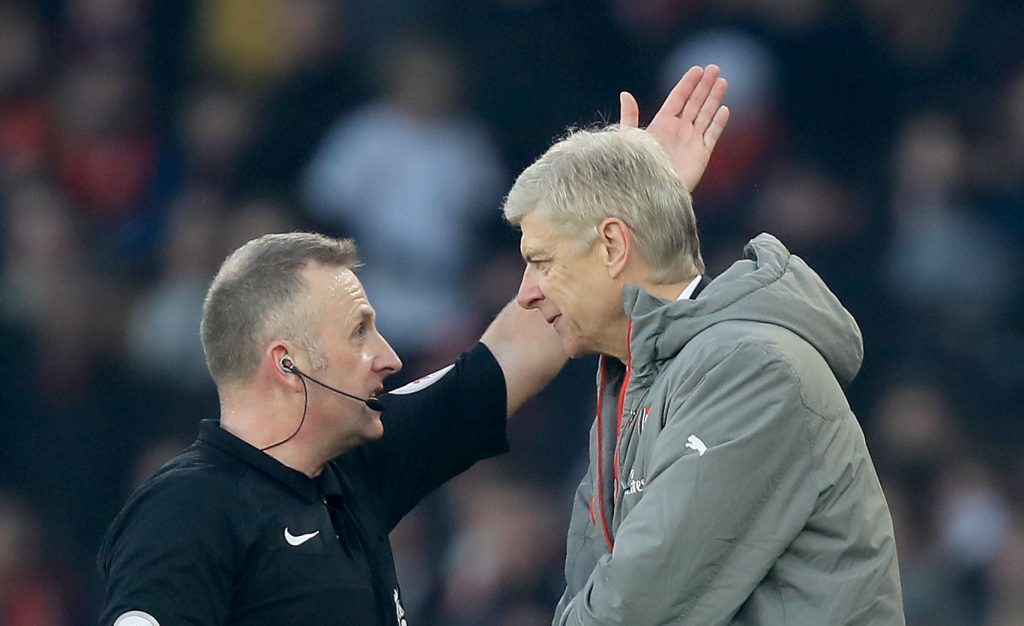The referee in football is always right. He or she never makes a wrong decision.
Before you mount your high horse, I’m not arguing that, but the laws of the game are. They state that every decision in a game of football is based on the referee’s opinion.
Logically then that means that unless something underhand is going on, then at the time a ref makes a decision, it’s the correct one.
Obviously it’s not that simple and a battery of camera angles in television replays can and do now show when a referee has erred. But at the time the decision was made, it was in the mind of the official, the correct one according to the laws of the game.
In a week when top English managers Jurgen Klopp and Arsene Wenger both had a blast at the men in black, it got me wondering what realistic improvements can be made to the current standards.
How would you improve the standards of refereeing in football? What actually can be done to ensure as few errors as possible occur?
Criticising from the terrace or armchair is easy but coming up with firm and practical proposals which are affordable and workable is a different ball game.
The game is arguably so quick now that one individual simply cannot keep up with play and cover all the necessary angles to spot every infringement or offside move.
Greater consistency is the war cry from fans and managers alike, but with no two situations on the pitch ever exactly the same, how logically can consistency apply to so many different situations?
Referees need all the help they can get and in the wake of tales of assault on young referees in England and fewer folk than ever coming forward to take refereeing up, the game needs to address the issue as a matter of urgency.
At top level, there is the money to make the game a full time trade as they’ve done in England. There is also the cash to bring in officials behind the goals, and instant TV replays could be used as in rugby.
None of these elements though, can guarantee that a referee’s decision will be accepted by fans. Supporters are not a homogeneous bunch anyhow. Some will agree with a decision and others will not. Usually the split is straight down party lines.
Recently I conducted an unscientific Twitter poll asking if fans would accept a penalty for their team even if they knew the referee had made a mistake in awarding it. Overwhelmingly those responding said they would take the penalty.
In my book that’s cheating.
Fans want referees to make the right decision all the time, unless it disadvantages them. That’s the nature of football. It’s tribal and not about logic. Managers and supporters want their team to win at practically any cost and if they don’t then the ref is a useful fall -guy.
If being a referee was such an attractive proposition, there would be a rush of ex-players to pick up the whistle, that fact that there isn’t tells its own tale.
